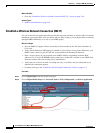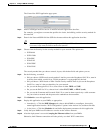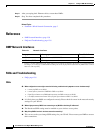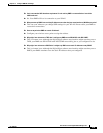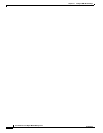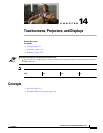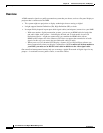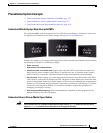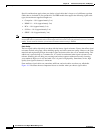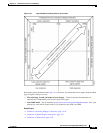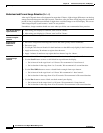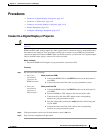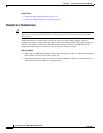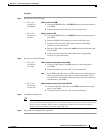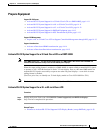
14-4
User Guide for Cisco Digital Media Manager 5.2.x
OL-15762-03
Chapter 14 Touchscreens, Projectors, and Displays
Concepts
Special considerations apply when you obtain a signal cable that is longer or of a different type than
cables that we included in your product kit. For DMP models that support the following signal cable
types, the maximum supported lengths are:
• Composite—10 ft (approximately 3 m)
• HDMI 1.1—16 ft (approximately 5 m)
• RCA—10 ft (approximately 3 m)
• S-Video—10 ft (approximately 3 m)
• SPDIF—10 ft (approximately 3 m)
Note When image signals are transmitted through a composite cable, image quality suffers. When you use a composite cable
and your DMP shows any web-based media, small text might be difficult to read in TVzilla (the web browser that runs on some DMP
models). To work around this limitation, you can lower the browser resolution setting in DMPDM.
Cable Quality
The best signal cables objectively are those with the lowest signal resistance. Factors that affect signal
resistance include wire gauge, cable shielding quality, and cable connector quality. However, the same
materials and engineering designs that reduce signal resistance add to the cost of manufacturing. This
added cost is passed along to a consumer. So, it is useful to understand when signal resistance is not
relevant. Knowing this can help you to manage and reduce expenses without necessarily lowering
your standards. High cost is not inevitable. Nor is it proof of high quality. Sometimes, in fact, high
quality (low signal resistance) is irrelevant.
Even mediocre signal cables are sometimes sufficient, and such cables are often very affordable.
Figure 14-1 illustrates the most important factors to consider when you choose signal cables.



